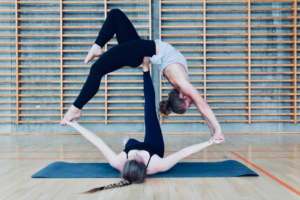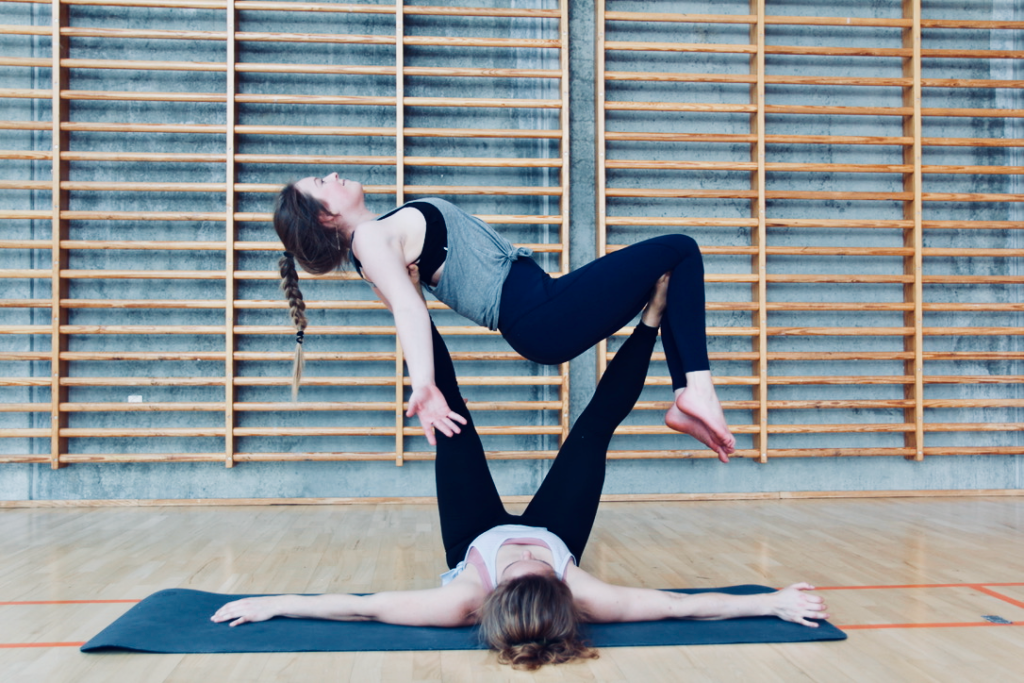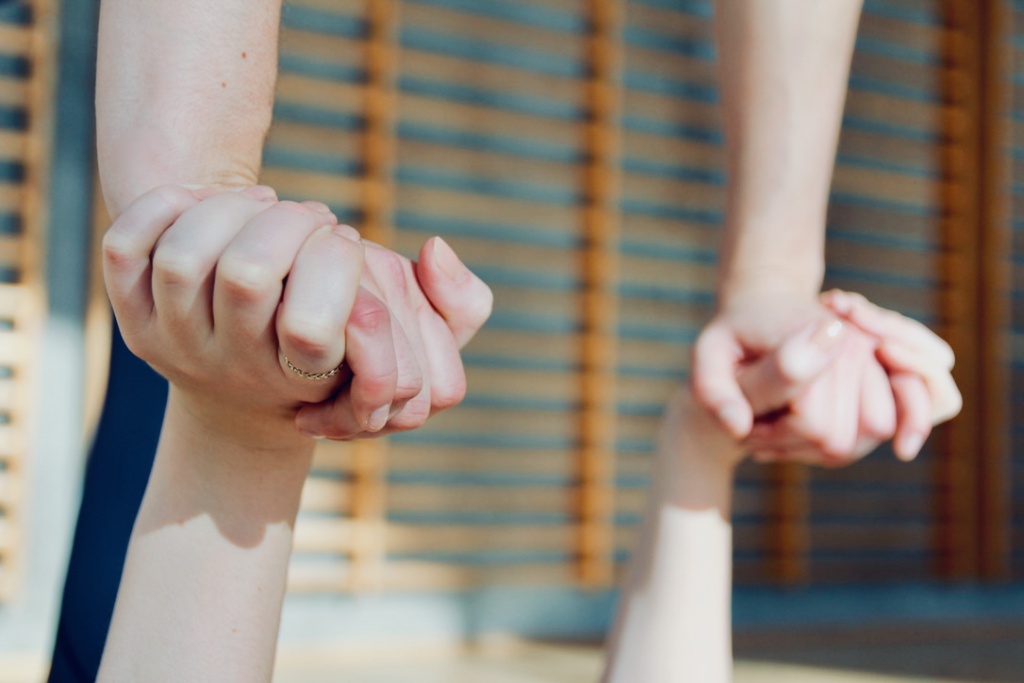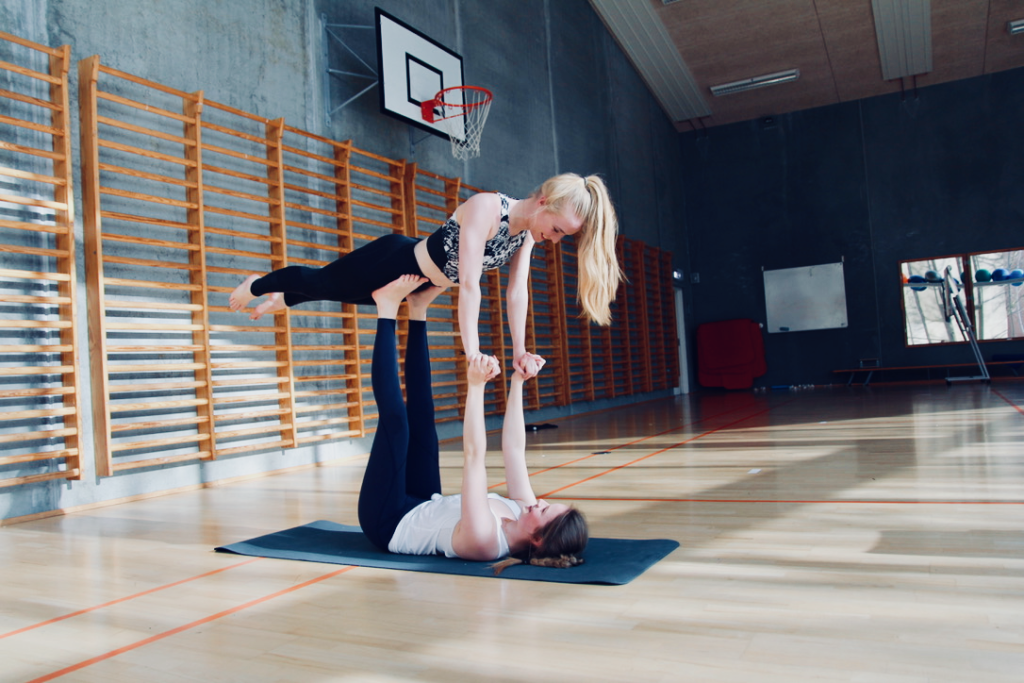What is acroyoga?
You have heard about, or seen, this “Acro Yoga”, maybe in park or on this web page… but you still don’t quite know what it is. Worry no more, just keep reading:
Strictly speaking Acro Yoga is a combination of movements from acrobatics, gymnastics and yoga. However, it is not a sport or a competition. Although Acro Yoga is a physical practice, I would hardly call it Acro Yoga if you do not also learn to improve your communication and get a renewed idea of physical touch and a sense of community.
Why Acro Yoga?
We practice Acro Yoga because it is fun and challenging. I have rarely practiced without laughing at least once (okay ten times) during the session. It brings you closer to the people you practice with, builds trust and community.
Aside from the emotional and social benefits of Acro Yoga, there are many physical benefits to practicing Acro Yoga. I have written more detailed about this here, but these are the cliff-notes:
Acro Yoga will improve your body awareness, help you build strength, balance and help you become more flexible/mobile.
On top of that, Acro Yoga is accessible to almost everyone. It can be scaled to fit any body composition and can meet you at your level of strength and flexibility. Acro Yoga is for men and women, adults, teenagers, children, businessmen and hippies, people with physical handicaps and many more.
Still not sure what Akro Yoga is?
Usually I start my explanation like this:
“Do you remember flying on you parents’ feet as a child in ‘the plane’”?
If you do, then you have already practiced Acro Yoga. If you haven’t, this is most likely the first pose you will meet in Acro Yoga, disguised under the name ‘Bird’.
Speaking of childhood, Acroyoga is interspersed with a lot of fun and games, and plenty of opportunities to take yourself less serious and release your inner child.
Trust, cooperation and communication
Acro Yoga is a partner activity, it takes two or more people to practice (read more about ‘The roles in Acro Yoga‘). Given that there are more people involved, we are also more dependent on each other.
In Akro Yoga we are dependent on each other to practice and to succeed!
This might be challenging at times, but it is also what brings so much joy and connection. We succeed together and we struggle together. Whatever happens, you are not alone, and it can never be ‘only on your merit’ that it succeeds or fails. Thus, we unavoidably learn to be invested in each other and to cooperate.
On that note, I want to briefly mention communication. When a situation arises in which we need to analyse and adjust, we need to do this in a constructive way in order to maintain a thriving partnership. We can only feel our side of the situation, and thus it is easy to fall into the “you did this wrong” language. Since it is never solely anyone’s fault, it is ideal to develop a language that shows this. In Acro Yoga we often use language such as “What can I do for you to be able to…”. This opens op for the possibility that it is not the partner that caries all the fault, and leads to better cooperation and consequently trust. And we want to build trust!
If you don’t have trust it can be hard – if not impossible – to practice Acro Yoga.
However, do not fret if this does not come naturally to you. Firstly, working with the same people, will allow you to build trust in them over time. Secondly, the more you practice Acro Yoga, the more I find that you improve your trust in new Acro-yogis you meet (and as a bonus to people in life in general).
The Yoga in Acro Yoga
By now you might be wondering, where is the YOGA in Acro Yoga? In my opinion there are two links. Firstly, the physical poses. Although we practice with minimum one other person on our mats, there are several of the poses that have similarities to yoga poses (If you want to see this for yourself, I recommend you to check out @acrovinyasa that have monthly Yoga -> Acro Yoga challenges). Secondly, the approach to the practice. The Acro Yoga community is focused on minimizing the distance between us… physically but also (as in the yoga mindset) spiritually. We strive to be focused on the journey and the process, not the end or goal.
There is a strong focus on HOW we practice together.


Acro Yoga contains elements that are found in yoga (and in any good relationship 😉 ) such as presence and trust. Although the focus on breath is not as profound as in classical yoga, elements can still be found – the breath is especially used to synchronise movements and ready the mind before a (perhaps scary) trick.
Solar and Lunar Acro Yoga
The physical aspects a Acro Yoga fall into two broad categories, Solar and Lunar. Solar Acro Yoga is the acrobatic poses that challenge our strength and flexibility. We go through different poses and transitions where everyone participates and cooperates as flyer, base and spotter. Lunar Acro Yoga is a restorative practice, with a giver and receiver. It involves techniques from ThaiYogaMassage and flying therapeutics, where the flyer has a role as a passive receiver, while being stretched or otherwise moved around in relaxing positions.

The individuality – What can you expect in an Acro Yoga class?
Inside these wide boundaries, specific teachers also find their own style and bring with them elements from their other practices. Thus, at many Acro Yoga classes you can also find elements of traditional Yoga, singing, handstand and much more.
So do you wanna try Acro Yoga?
The answer is off course YES – So click here!


